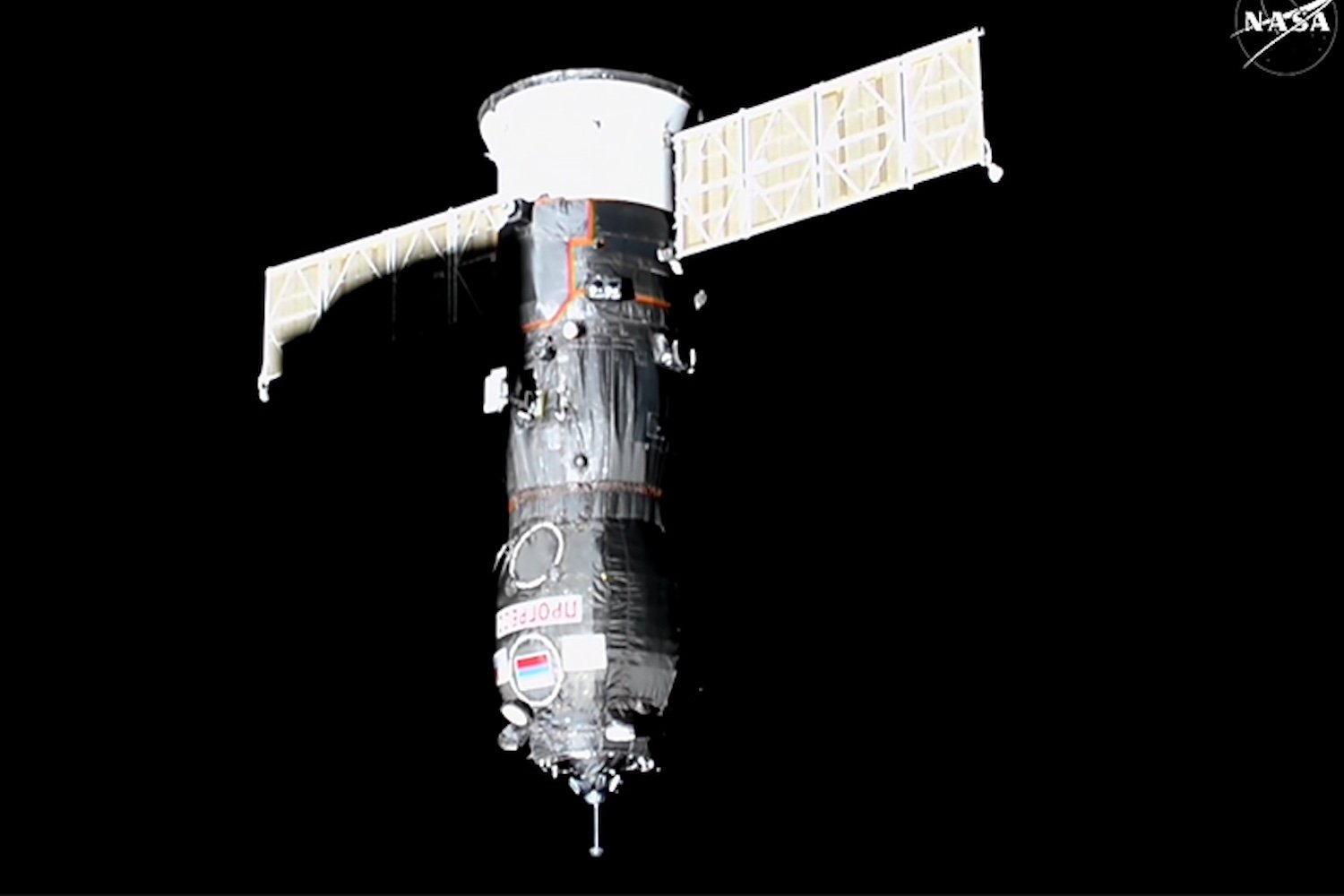The hatch between a Russian cargo ship and the International Space Station (ISS) is finally open after a foul stench initially prompted astronauts to seal it off. The good news is, the smell has not lingered and NASA may have figured out the cause.
Roscosmos cosmonauts Ivan Vagner and Aleksandr Gorbunov unpacked the Progress 90 cargo ship, which carried three tons of food, fuel, and other supplies to the ISS. Upon docking to the space station’s Piosk module on Saturday, astronauts noted a weird smell coming from the cargo ship, in addition to some odd floating droplets. After keeping the hatch that connected Progress and the Russian module closed to seal off the stench, the astronauts later reported that the odor dissipated quickly and they proceeded with cargo transfer operations, NASA wrote in an update on Monday.
As for the reason behind the odd smell, NASA said it may have been due to “outgassing from materials inside the cargo spacecraft.” It’s not clear whether that may have affected the supplies being loaded onto the ISS.
Upon the detection of the smell, the flight controllers on the ground activated air scrubbing equipment “as part of normal procedures,” NASA wrote. Cosmonaut Vagner also cleaned ventilation systems and conducted photography inspections, according to the space agency. NASA had reported earlier that the air quality inside the space station was at normal levels, dismissing concerns that the ISS may have been exposed to a contamination risk.
The Progress 90 spacecraft is set to remain docked to the ISS for a period of six months. Afterward, the cargo ship will plunge toward Earth’s atmosphere, burning up upon reentry, along with trash from the ISS that the astronauts will load onto Progress.
Its predecessor, Progress 89, launched on August 14 and is currently docked to the space station. On Monday, it performed an orbit-raising maneuver for the ISS, firing its engines for three and a half minutes to move the station farther from a broken-off satellite fragment in its path, according to NASA. The maneuver helped the ISS avoid a possible collision with the orbital debris. Such maneuvers are now weirdly common these days.
The ISS has served as a home for astronauts for over two decades, but the aging space station is set to retire by 2030, diving through Earth’s atmosphere where most of it will burn up upon reentry and the remaining fragments will land in a remote region of the Pacific Ocean known as Point Nemo.




